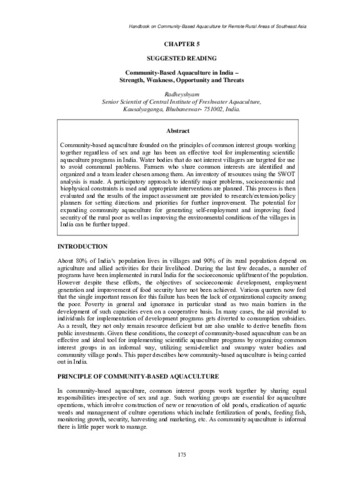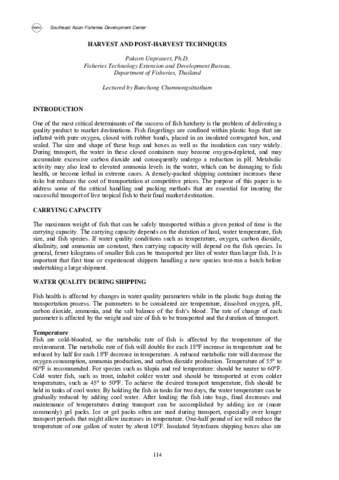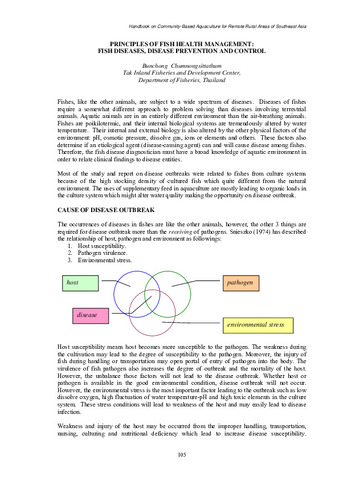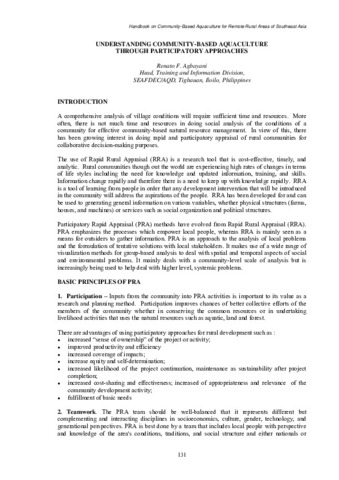Browsing Handbook on Community-based Aquaculture for Remote Rural Areas of Southeast Asia by Subject "Freshwater fish"
Now showing items 1-5 of 5
-
Community-based aquaculture and resource management: Concepts and approaches
(Secretariat, Southeast Asian Fisheries Development Center, 2008)Poverty characterizes most fishing communities in the Southeast Asian region. In the Philippines, the socioeconomics survey of the National Statistics Office shows that 684,500 or 95.3% of the total 718,267 fishing families ... -
Community-based aquaculture in India - strength, weakness, opportunity and threats
(Secretariat, Southeast Asian Fisheries Development Center, 2008)Community-based aquaculture founded on the principles of common interest groups working together regardless of sex and age has been an effective tool for implementing scientific aquaculture programs in India. Water bodies ... -
Harvest and post-harvest techniques
(Secretariat, Southeast Asian Fisheries Development Center, 2008)The maximum weight of fish that can be safely transported within a given period of time is the carrying capacity. The carrying capacity depends on the duration of haul, water temperature, fish size, and fish species. If ... -
Principles of fish health management: fish diseases, disease prevention and control
(Secretariat, Southeast Asian Fisheries Development Center, 2008)Fishes, like the other animals, are subject to a wide spectrum of diseases. Diseases of fishes require a somewhat different approach to problem solving than diseases involving terrestrial animals. Aquatic animals are in ... -
Understanding community-based aquaculture through participatory approaches
(Secretariat, Southeast Asian Fisheries Development Center, 2008)A comprehensive analysis of village conditions will require sufficient time and resources. More often, there is not much time and resources in doing social analysis of the conditions of a community for effective community-based ...





